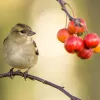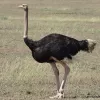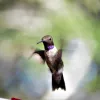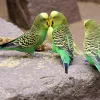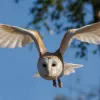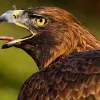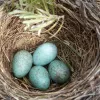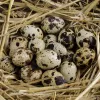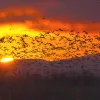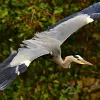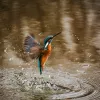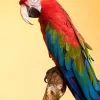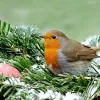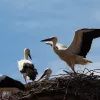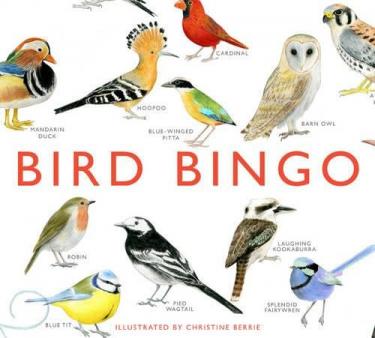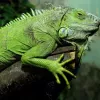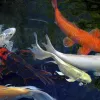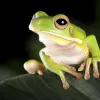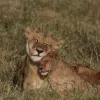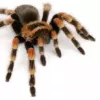TheSchoolRun.com closure date
As we informed you a few months ago, TheSchoolRun has had to make the difficult decision to close due to financial pressures and the company has now ceased trading. We had hoped to keep our content available through a partnership with another educational provider, but this provider has since withdrawn from the agreement.
As a result, we now have to permanently close TheSchoolRun.com. However, to give subscribers time to download any content they’d like to keep, we will keep the website open until 31st July 2025. After this date, the site will be taken down and there will be no further access to any resources. We strongly encourage you to download and save any resources you think you may want to use in the future.
In particular, we suggest downloading:
- Learning packs
- All the worksheets from the 11+ programme, if you are following this with your child
- Complete Learning Journey programmes (the packs below include all 40 worksheets for each programme)
You should already have received 16 primary school eBooks (worth £108.84) to download and keep. If you haven’t received these, please contact us at [email protected] before 31st July 2025, and we will send them to you.
We are very sorry that there is no way to continue offering access to resources and sincerely apologise for the inconvenience caused.
Birds
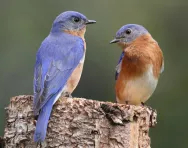
All birds belong to the group of animals called vertebrates, meaning animals having a backbone. Birds make up a special group of vertebrates called aves.
Birds have a lot in common with reptiles, such as turtles, crocodiles, and lizards. Scientists think that birds and reptiles are old relatives, and have many shared traits, such as laying eggs. Scientists also know that birds have some very different traits from their relatives, such as feathers instead of scales (though most birds have reptile-like scales on their legs and feet), pointed beaks, and wings.
Fossil records show us that birds evolved at around the same time as the dinosaurs and are said to be descended from small meat-eating dinosaurs called theropods.
There are around 10,000 different known species of birds today. They live on all seven continents and have adapted to live in every climate – from the snowy expanses of Antarctica to the steamy rainforests and dry desert plains.
Top 10 facts
- Birds' skeletons are usually very strong but incredibly light, which enables them to fly.
- The chicken is the most common species of bird found in the world.
- Many species of bird annually migrate great distances, and many more perform shorter irregular movements.
- Bird eggs are usually laid in a nest and incubated (kept warm) by the parents.
- 75% of wild birds die before they are 6 months old.
- Birds make popular pets and include budgerigars, canaries, cockatiels, cockatoos, doves, finches, lovebirds, parakeets, parrots, and macaws. Macaws can even mimic human speech!
- There are over 2000 birds listed on the endangered bird list; disease, environmental waste, marine pollution, global warming and deforestation have all contributed to the decline in numbers of many species of birds.
- Some bird species, such as the crow, are intelligent enough to create and use tools!
- Birds' diets are varied and often include nectar, fruit, plants, seeds, the carcasses of other animals, and various small animals, including other birds. Because birds have no teeth, their digestive system is adapted to process food items that are swallowed whole.
- People who study birds are called ornithologists.

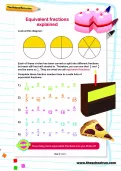
Boost Your Child's Learning Today!
- Start your child on a tailored learning programme
- Get weekly English & maths resources sent direct to your inbox
- Keep your child's learning on track
Did you know?
- Hummingbirds are the only birds which can fly backwards and are the smallest species of bird – some only weigh 1g!
- Birds seek out places that have warmth, food and are safe for breeding.
- Seasonal migration mainly happens in the Northern-Hemisphere, because in the Southern Hemisphere, especially in the tropics, it is always warm enough for an adequate year-round food supply, and there is little variation in the length of day throughout the year, so birds have plenty of time to eat in a day. So, not all birds migrate.
- During the long days of the northern summer, birds have more hours to feed their young on the abundant insect population. As the days shorten in the north in autumn and food supplies become scarce, the birds migrate south.
- Birds are very social animals, communicating with visual signals, calls, and songs, and participating in such social behaviours as cooperative breeding and hunting, flocking, and mobbing of predators.
- The woodpecker can peck 20 times per second, that's 1200 pecks per minute.
- The largest and heaviest bird on the planet is the ostrich. Native to parts of Africa, the ostrich can run up to a speed of 70 km/h with its extraordinary long legs.
- Homing pigeons are bred to find their way home from long distances away and have been used for thousands of years to carry messages.
- Most birds have quite a long period of parental care after hatching, feeding their young to keep them healthy and then showing them the skills they need to survive. One bird which doesn’t follow this rule is the cuckoo. Each season, a female cuckoo will lay between 12 and 22 eggs, all in different birds’ nests. The birds will then raise the cuckoo chick as their own! A female cuckoo will generally lay her eggs in a nest belonging to the same species of bird that reared her.
- Man makes use of different birds in many different ways. For example, birds such as chickens, geese or game birds like pigeons and pheasants supply us with food. Some species, particularly songbirds and parrots, are popular as pets. Another use of birds is harvesting guano (droppings) for use as a fertiliser. We also use feathers from birds such as ducks and geese as filling for bedding and fancier feathers are even used in fashion as decorations on hats or trims on clothing.
- Penguins cannot fly but are exceptional at swimming; they have webbed feet and wings adapted to work in a similar to flippers, the tail is short and wedge shaped.
Look through the gallery and see if you can spot the following:
- Common British garden bird
- An ostrich
- Hummingbird
- Budgerigars make excellent pets
- A barn owl in flight
- A close-up view of a bird's beak
- There are lots of different sizes and colours of bird eggs!
- Geese in flight
- A heron
- A kingfisher
- A parrot
- A robin
- Storks in a nest
Gallery
About
All birds have the same basic parts and functions, but are unique in their own ways. All birds are warm-blooded, which means they can control and maintain a constant body temperature even if the temperature around them changes. Cold-blooded animals can only control their body temperatures by moving into warmer or cooler areas.
All birds lay eggs – some birds lay eggs which are smaller than your fingernail, but others, like the ostrich, lay eggs which can weigh more than a kilogram.
All birds grow feathers, making them different from all other animals. The different types of feathers help a bird survive. Feathers not only help a bird to fly or swim, they also:
- protect its sensitive skin
- help attract mates
- serve as insulators to trap body heat
- serve as camouflage
Feathers are held together and in place by a hollow tube called the shaft. The shaft is made of a very hard material called keratin. Birds have three basic types of feathers: contour feathers which cover the wings, body, and tail and streamline a bird to help give it a smooth, sleek shape. They are stiff, flexible, and very strong yet lightweight. Down feathers are fluffy feathers which are close to the body, underneath the contour feathers. They help insulate a bird and keep it warm. Flight feathers are special contour feathers on the wings, shaped to fan the air, creating "lift" to help a bird get off the ground, move about in the air, and land safely. All birds have wings, even flightless birds such as ostriches and penguins. Birds' wings are attached to their chest muscles. In birds that actually fly those muscles are very powerful.
Birds often see much better than other animals, including people. They have very large eyes that focus keenly on near and far away objects. Unlike many mammals, birds can see colour. Birds use their keen eyesight to: find food; spot mates; keep an eye on enemies and find a place to live. A bird's eyes are usually located toward the front and/or sides of its head, and may point almost directly forward or in opposite directions, giving it one of two types of vision or a combination of both. Birds also have a very keen sense of hearing, and this is another way they can protect themselves from danger.
Birds have adapted in all sorts of ways, in order to survive in different climates and environments. For example, seed eaters like sparrows and cardinals have short, thick conical bills for cracking seed. Birds of prey like hawks and owls have sharp, curved bills for tearing meat whilst some ducks have long, flat bills that strain small plants and animals from the water. Osprey use their large curved claws to snatch fish from the water. Pheasants and other birds that scratch the soil for food have nail-like toes. Robins have a long back toe, which lets them grab a perch tightly and many fast-running birds have three toes rather than four. Some birds have adapted to live in extremely cold conditions, others have adapted to spend most of the time in the air or in the water.
Words to know:
abundant - a more than plentiful supply of something
adapted - to become, or make somebody or something become, used to a new environment or different conditions
camouflage - the devices that animals use to blend into their environment in order to avoid being seen by predators or prey, especially colouration
carcass - the dead body of an animal, especially one slaughtered and prepared for use as meat
climate - the average weather or the regular variations in weather in a region over a period of years
continents - any of the seven large continuous land masses that constitute most of the dry land on the surface of the Earth. They are Africa, Antarctica, Asia, Australia, Europe, North America, and South America.
decline - to decrease in number, amount, value, or quality
deforestation - to remove the trees from an area of land
diet - the food that a person or animal usually consumes
environment - all the external factors influencing the life and activities of people, plants, and animals
evolved - to develop from an earlier biological form
exceptional - well above average
fertiliser - substance usually added to or spread onto soil to increase its ability to support plant growth
fossil - the remains of an animal or plant preserved from an earlier era inside a rock or other geological deposit, often as an impression or in a petrified state
insulator - a material or device that prevents or reduces the passage of heat
marine - relating to, found in, or living in the sea
migrate - to move from one region or country to another
relatives - one thing that is related to something else, especially a species that has developed from the same origin as another species
reptile - an air-breathing cold-blooded egg-laying vertebrate with an outer covering of scales or plates and a bony skeleton
scarce - being in insufficient supply
species - a kind, sort, or variety of something
traits - a characteristic or quality that distinguishes somebody
unique - being the only one of a kind
vertebrate - an animal with a segmented spinal column
Related Videos
Just for fun...
- Be a nature detective – lots of bird activities to download and print out including bird spotter sheets and tick lists and bird nest-building practice
- Make a bird cake, a recycled bird feeder, or get ready for the RSPB's annual Big Garden Birdwatch!
- Bird colouring and craft activities for younger children
- Lots of online games for junior bird lovers
- Complete a migratory bird wordsearch
- Do some bird spotting with Nest Friends Spotter Sheets, print out bird colouring sheets or create a bird of your own!
- Learn about the dangers of migration
- Help Wanda the Wood Thrush travel from her winter home in Costa Rica to her summer home in the USA with an online migration game
- Learn about different bird songs
Books about birds for children
Find out more
- Read information about bird feathers
- Find out why birds sing in the morning
- See a video of chicks hatching
- Learn about the incredible journeys made by birds in their migrations
- Living Islands: Live follows the seabird season with two live webcams from the heart of the puffin colony on Burhou near Alderney
- How do birds survive winter and do birds sleep?
- Watch a video of a hummingbird flying in slow motion
- Lots of information about bird feet
- Find out about the challenges baby birds face
- Information about birds of the past
- A month-by-month guide to what birds can be seen in British gardens
- What to do if you find a baby bird outside its nest
See for yourself
- Keep up with all the latest 'comings and goings' at the RSPB's feeders and reserves webcams at The Lodge nature reserve, Bedfordshire and Abernethy Loch Garten Osprey Centre
- Watch birds from around the world on webcams on every continent
- Visit a wildlife reserve to see birds up close
- A list of UK bird centres, aviaries and falconry centres
- Learn to identify British birds
